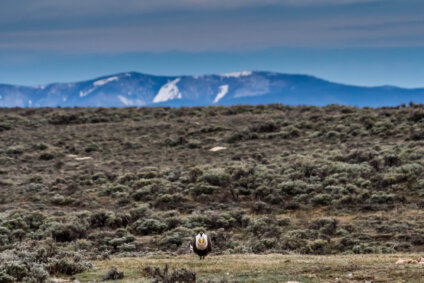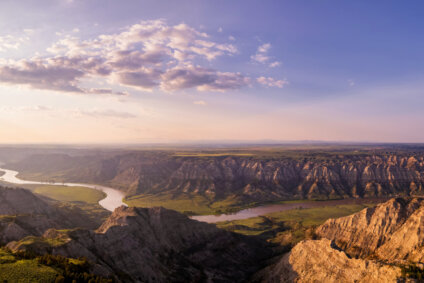Interior reduces oil and gas lease sale by 80%
The reduction is a small but necessary step toward overhauling our outdated and biased leasing system

On the afternoon of Friday, April 15, the Department of the Interior announced that it was reducing, by nearly 80%, the number of acres it will include in its upcoming national oil and gas lease sale.
The June sale – the first onshore lease sale under the Biden administration – will make 145,000 acres available. This is a dramatic and necessary reduction from what extractive industry leaders wanted: 646 parcels across 700,000 acres and nine states.
Critically, the BLM is also imposing an 18.75% royalty on any commercial production that stems from future development on these leases. This higher royalty rate – equal to what industry pays for offshore development offshore and much closer to the royalty rate many states impose – will help ensure that taxpayers receive a fair return on this private development of our public resources.
Increasing the royalty rate is a crucial step toward ensuring that any leasing helps benefit nearby communities, an especially necessary development at a time when oil and gas companies are using the war in Ukraine as an excuse to jack up prices and pocket record profits.
The announcement follows 16 months of pauses, multiple court orders and findings, and additional analysis by the BLM. The agency specifically considered the following four factors (from the DOI’s November “Report on the Federal Oil and Gas Leasing Program”) when deciding what parcels should be available for lease:
- Is the parcel considered to have low potential?
- Is the parcel in proximity to existing oil and gas leases and development/operations?
- Is the parcel in conflict with important habitats or connectivity?
- Is the parcel in conflict with high cultural resource values/areas?
We’re pleased that Interior and the BLM are taking steps to overhaul the outdated and biased leasing program, and we commend Secretary Haaland and the department for taking this meaningful step to avoid needlessly imperiling wildlife, important cultural resources, and rural communities. While our broken oil and gas leasing system remains in dire need of modernization, we’re encouraged by these developments.
What does it mean for Montana?
On April 18, the BLM released its documents for individual states, including Montana.
Here, the BLM will make 2,834 mineral acres available across eight parcels, down from 6,277 acres and 14 parcels nominated by oil and gas companies.
The six parcels deferred from (not included in) the sale are part of a landscape in southeast Montana that includes an important pronghorn migration corridor that the BLM and Montana Fish, Wildlife, & Parks will study in the coming year.
Unfortunately, the BLM did not defer the potential lease of other parcels in Montana, despite outstanding concerns about potential conflicts with wildlife, including pronghorn.
While it’s unfortunate that the BLM is compelled to conduct this sale at all, we’re heartened by its adoption of the analysis criteria and royalty rate increase, critical first steps in modernizing this broken system. Our longstanding leasing system, in which over one million acres in Montana have been leased for $2 an acre or less, has locked up public lands for oil and gas development that almost never materializes, resulting in hardly any oil or gas production, little tax revenue, few jobs, and scant benefit to anyone except those who buy the leases on the cheap to pad their investment portfolios.
Of course, we’re critically concerned that federal public lands continue being made available at all for private oil and gas development that, if it ever does occur, will result in tens of thousands of pounds of carbon emissions into the atmosphere, without any substantial benefit to local communities.
International scientific consensus holds that the global community must reach net-zero carbon emissions by 2050, and President Biden himself committed to seeing the U.S.’s emissions reduced by at least 50% by 2030. We will not achieve either milestone – critical to staving off the worst effects of climate change – as long as more acreage enters the fossil fuel production pipeline.
Organizations and members of the public who submitted substantive comments during earlier public engagement phases of the lease sale analysis may submit protests until May 19th. Wild Montana is still evaluating the details of the documents with our partners. If you would like more information about filing a protest, please email me at abertram@wildmontana.org.
Stay Connected
"(Required)" indicates required fields


